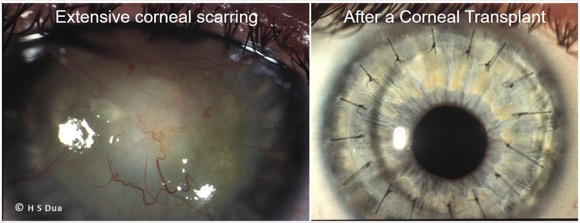Cornea

The clear window in the front of the eye.
The cornea can be affected in a number of ways which prevent passage of light and proper focus of light in the eye. Often the only treatment is a cornea transplant. A circular disc... more
Keratoconus is common condition that affects young individuals. The cornea progressively bulges out more and more and becomes shaped like a cone. This can affect vision considerabl... more
Alcohol delamination is a simple and versatile technique that is used to treat or help with diagnosis of several conditions. In particular it is used very effectively to treat the ... more
In certain diseases, a build-up of calcium occurs on the surface of the cornea. This causes blurring of vision and sometimes considerable irritation. The calcium is removed by diss... more
Biological (fibrin) and synthetic (cyanoacrylate) glues are quite often used in different situations to treat eye conditions. Corneal perforation from disease, infection or injury ... more
Some lumps and bumps on the cornea that cause irregularity, dryness, irritation and affect sight are removed by shaving off a thin layer of the surface of the cornea thus removing ... more
When the diagnosis is not clear or when the infective organism needs to be identified to decide on proper treatment, a sample of tissue is removed by a biopsy technique or scraping... more
The amniotic membrane is harvested, processed and stored by the UK Eye Banks. A vacuum dried version is also available (Omnigen by NuVision). This tissue is used by itself or as pa... more
Injury to the eye occurs in home and work environments. Partial and full thickness cuts of the cornea need to be stitched precisely so that shape and transparency is maintained. Di... more
At times, after corneal transplant, particularly after deep anterior lamellar keratoplasty and penetrating keratoplasty, when all stitches are removed, the shape of the corneal gra... more
